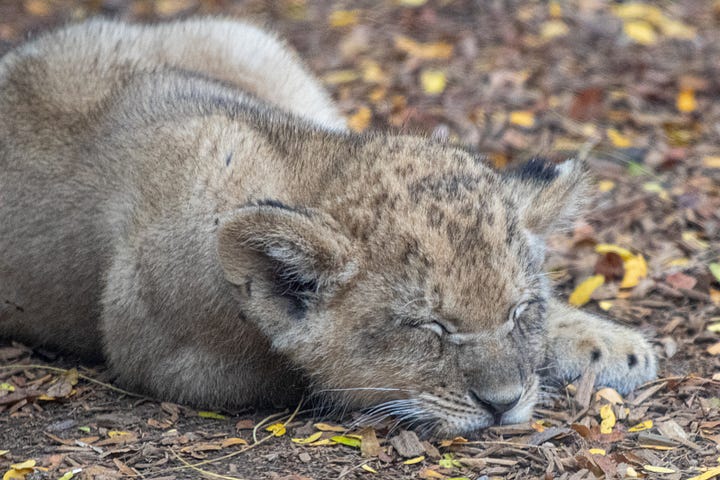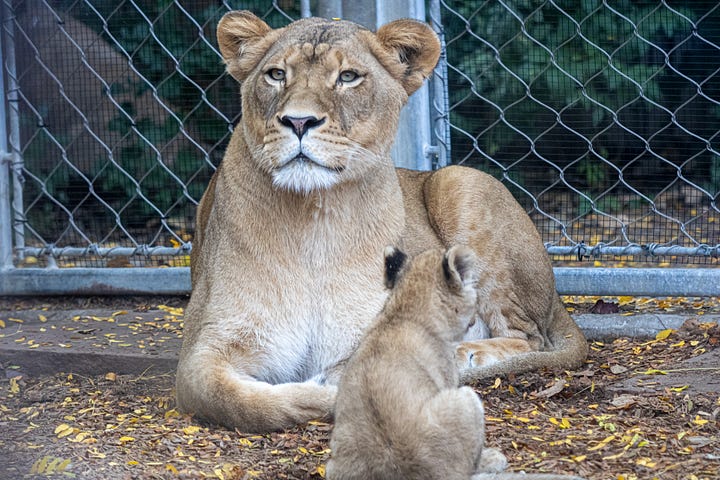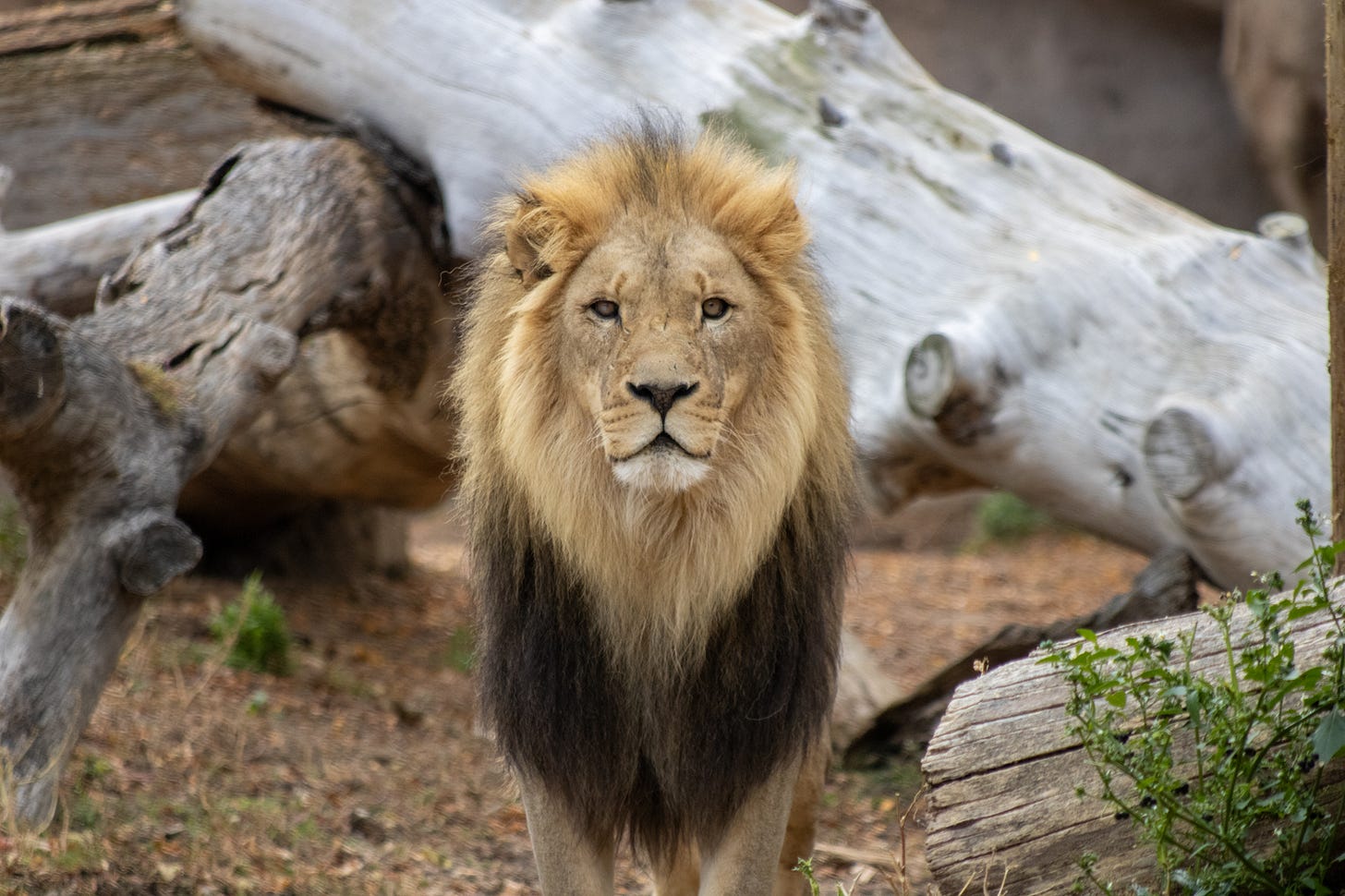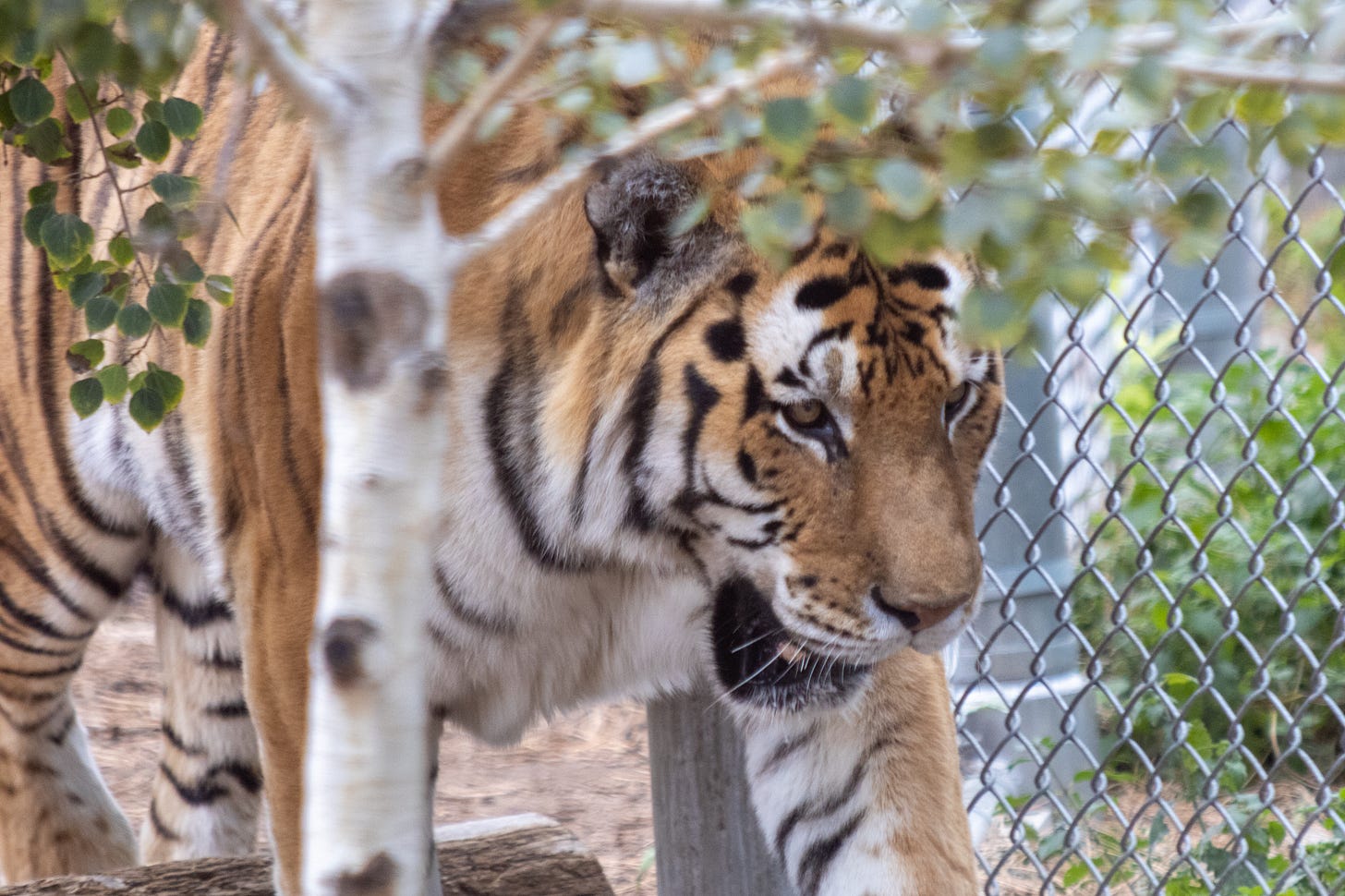Wildlife Conservation
By: Kali and Mateo
Photo credits: John Busch (aka our Dad)
We don’t get many chances to contribute to this Substack account because our canine sisters do most of the posting. We’re Kali and Mateo, the cats of the group, and we believe we should get more airtime. Even though we don’t go on adventures outside the house like Mala and Tessie do, we are older and have plenty of wisdom to share.
Our parents recently purchased a membership to the Denver Zoo Conservation Alliance (DZCA). Mom is usually skeptical of zoos because she worries about the potential exploitation of the animals. However, as she learned more about DZCA, she became increasingly supportive of their efforts. As a non-profit organization, they focus on conservation and emergency wildlife response to protect species threatened by human encroachment, habitat loss, and catastrophic events. Their website states, “Since 1996, Denver Zoo Conservation Alliance has supported or directly participated in more than 600 conservation projects in 62 countries spanning six continents.” The over 2,500 wonderful animals at the DZCA serve as ambassadors for their wild counterparts worldwide.
Mom and Dad came home today from visiting the zoo and told us about our “relatives” they saw, including the African Lion, the Clouded Leopard, and the Siberian Tiger.
The main reason for their outing today was to see the four new feisty lion cubs, who were born on August 13 to mom Araali. They represent a fourth generation of lions born at DZCA. Just yesterday, the cubs started spending a few hours a day in the Maternity Yard, where visitors can see them and their mom.


Lions are currently listed as vulnerable on the Red List. The DZCA’s latest conservation partnership is with the Kyambura Lion Monitoring Project (KLMP), which helps protect the lion population in Uganda’s Queen Elizabeth National Park (QENP). The lion population in QENP has fallen to fewer than 50 individuals, making conservation efforts essential.
The Clouded Leopard’s International Union for Conservation of Nature (IUCN) status is also vulnerable. Estimating their populations in the wild is difficult, but numbers are believed to be declining due to habitat loss from deforestation for agriculture. Sadly, these beautiful cats, which can’t roar but do purr, are hunted for their stunning pelts. Their bones, claws, and teeth are also used in traditional Asian medicine.
The Siberian Tigers are the most endangered of these three cats; they are critically endangered. It’s estimated that only 350-450 Siberian tigers remain in the wild, although there are 650 in captivity. Tigers are poached for their bones and organs, which are highly valued in traditional medicines. A single tiger can be worth over $15,000. Recent conservation efforts have increased the number of wild Siberian tigers, but continued work will be necessary to ensure their survival.
We hope that through the efforts of DZCA and other conservation organizations, they can help our wild feline friends survive. It’s terrible to think these majestic cats might go extinct. We wish humans would better understand how their actions harm animals and take greater care to preserve the habitat of all beings.




